Porto-North-Portugal.com
The best independent guide to the Northern Portugal
Porto-North-Portugal.com
The best independent guide to the Northern Portugal
Chaves, Portugal: an independent travel guide for 2026
For centuries, the town of Chaves was revered as the "Key to the Kingdom," a formidable guardian of Portugal's northern frontier. Its strategic position on the Spanish border meant that control of Chaves was crucial for the nation's defence, a legacy of conflict and power that is etched into the town’s very character.
Yet, long before it was a military stronghold, Chaves was founded by the Romans for a completely different purpose: its naturally hot, healing waters. This ancient identity as a spa town endures today, with people travelling from across Portugal to seek treatment in its vast thermal spa complex, creating a fascinating duality of a town built for both war and well-being.
This rich, layered history is visible at every turn. The imposing medieval castle still watches over the town, while the ancient Ponte de Trajano, a masterpiece of Roman engineering, has spanned the Tâmega River for nearly two millennia. Within the historic centre, cobbled lanes wind between traditional houses and Gothic churches, revealing a town of deep, authentic character.
Today, Chaves offers a peaceful charm that feels a world away from the main tourist routes. It is a destination that rewards those who venture into Portugal's rugged north, offering a unique blend of monumental history and restorative calm.
This guide provides everything you need for a perfect visit, helping you make the most of your time in Chaves.
Highlights of Chaves
The Ponte de Trajano - A magnificent feat of Roman engineering, the bridge has spanned the Tâmega River for nearly 2,000 years. At its centre stand two original Roman milestones, honouring the emperors Vespasian and Trajan.
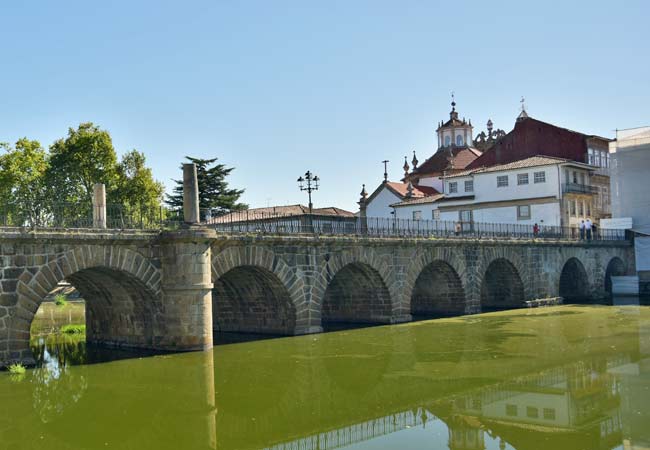
The Jardim do Castelo - These peaceful gardens surround the town's imposing medieval keep, the main surviving structure of Chaves Castle. The tower itself now houses a military museum, detailing the region's long history of conflict.
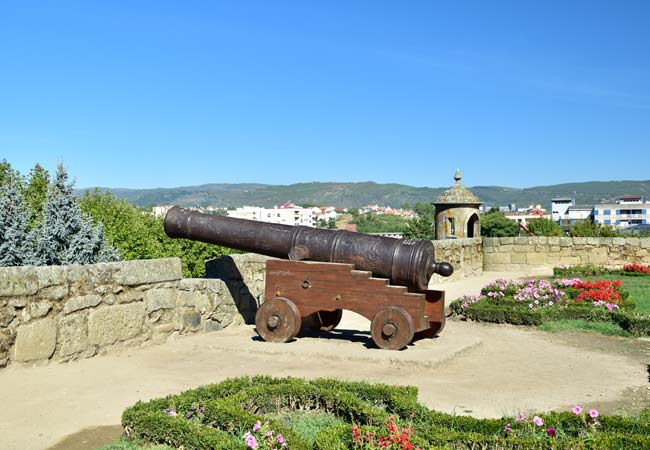
The Praça de Camões - The elegant Praça de Camões is the historic and civic heart of Chaves, lined by the town's most important buildings. These include the Paços do Concelho (Town Hall) and the Gothic Igreja Matriz de Santa Maria Maior.
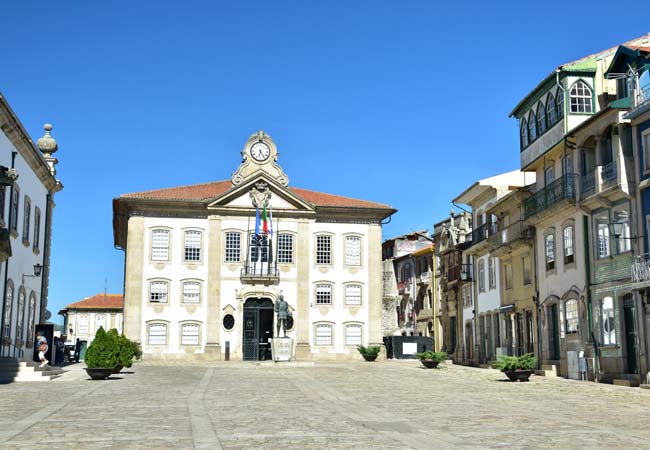
The Alameda de Trajano Riverside Walk - This tree-lined promenade offers a tranquil walk along the banks of the Tâmega River, providing beautiful views of the Roman bridge and the historic town.
A day trip to Chaves
Chaves can be easily explored as a day trip, and takes around 3 hours to fully see. The main sights of the town are in a relatively compact area, but there are pleasant riverside walks which can easily extend any day trip.
The map interactive map below shows a suggested tour of Chaves.
Sights of the day trip: 1) Praça de Camões 2) Castelo de Chaves 3) Igreja Matriz de Santa María Maior 4) Ponte de Trajano 5) Igreja de São João de Deus 6) Alameda de Trajano river walk 7) Termas & Spa 8) Fuente de agua (free spa water to try) 9) Castle walls 10) Roman baths museum 11) Praça General Silveira 12) São Francisco fort (now a hotel)
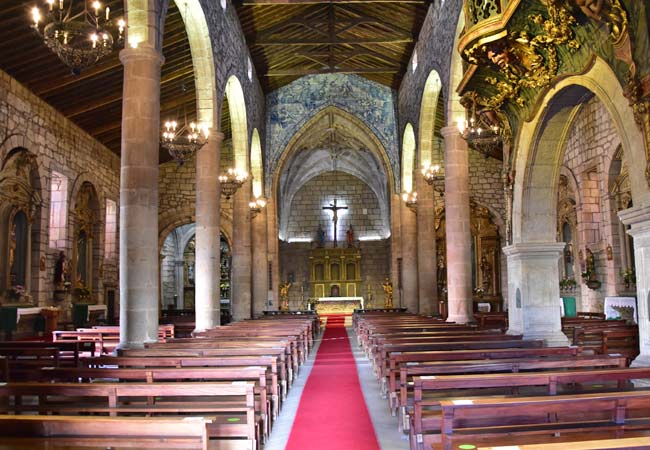
The gothic interior of the Matriz de Santa María Maior
A longer stay in Chaves
For your plans you may wish to spend longer in Chaves, mainly because of its location. For a day trip to Chaves requires a significant amount of driving, and it may be worthwhile to spend a night. Chaves boasts a wide selection of restaurants, shops along with a handful of bars, and has a pleasant small-town atmosphere.
Chaves also makes for a pleasant base from which to explore the far north of Portugal and the Trás-os-Montes region. From Chaves you could take day trips to Peneda-Gerês National Park and Bragança. Closer are the spa towns of Vidago and Verin (in Spain), the Castelo de Monforte, or the balancing rock at Pedra Bolideira.
The map below shows the location of the best hotels and accommodation in Chaves. If you adjust the dates to your stay, it will display current prices and availability.
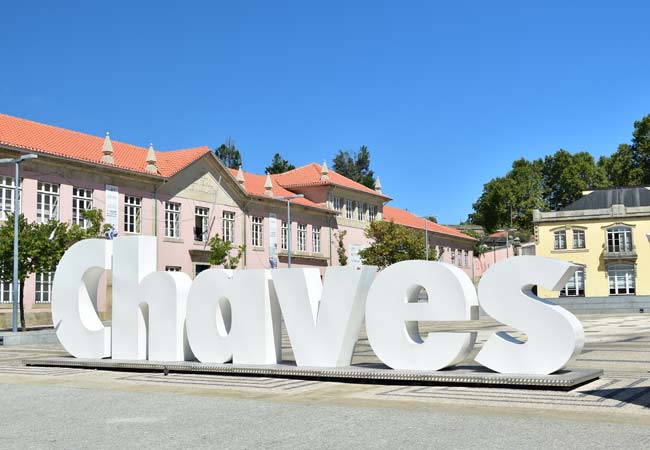
The name of the town stands on the Praça General Silveira, one of the lesser plazas of Chaves
Sights of Chaves
The Ponte de Trajano
The delightful Trajano bridge is the icon of Chaves and has been a crossing point of the Rio Tâmega at this site since the Roman era. The bridge was initial constructed in the 1st century on the orders of Emperor Trajan, and is named after him.
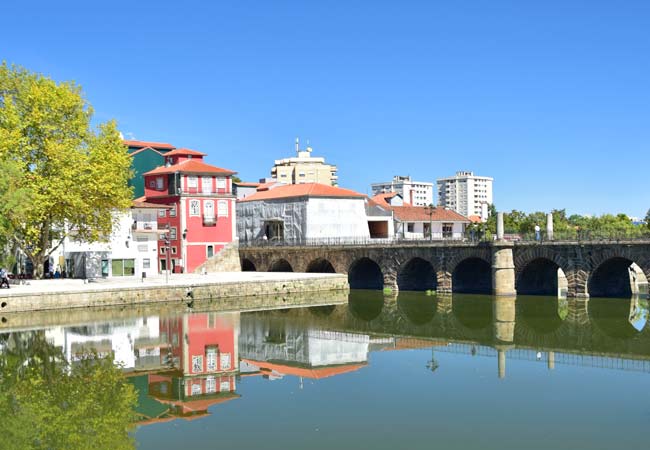
The course of the river has altered over the generations and at its maximum, there were 18 arches spanning the river. Today the river is narrower and only spanned by 16 arches.
At the centre of the granite bridge, are two replica pillars of the Roman commemorative inscriptions which once stood here (these can be seen in the Chaves Regional Museum).
The first pillar states that the bridge was funded by the population of Chaves and is dedicated to Emperor Trajan, while the second pillar, the Padrão dos Povos, is dedicated to Roman emperors Titus and Vespasian.
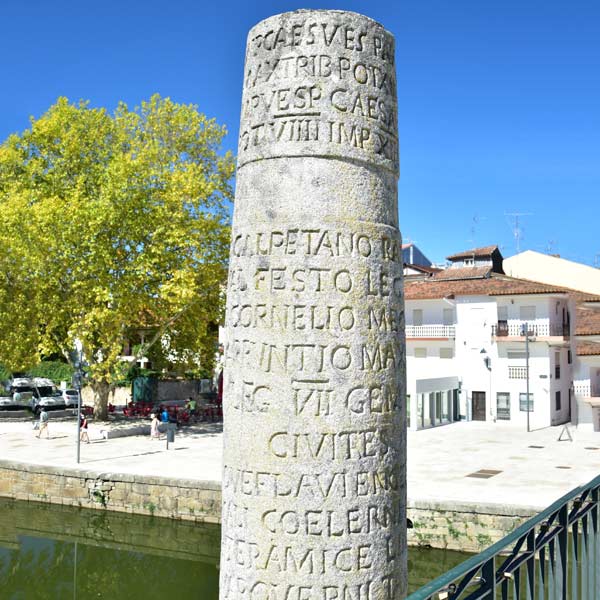
The Padrão dos Povos, an early form of Roman propaganda
Chaves’ thermal spring water
Deep below the Tâmega River valley runs the Corga tectonic fracture, which allows highly mineralised water to escape. One of these springs is in Chaves, and became popular during the Roman era due to its high temperature, a steady 73C (163F).
The Roman baths in Chaves were discovered by accident when the city was planning a new underground car park. The Roman bath complex of nine pools is of surprisingly good preservation, being buried by an earthquake landslide in the 3rd century. The construction of the museum which will eventually exhibit these baths has been fraught with issues, and hopefully by the time you visit will be open to the public.
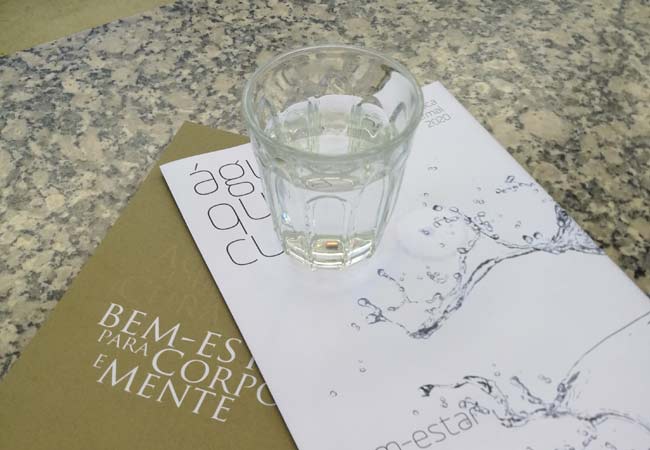
A glass of the good water, just mind, it is at 73C!
In the mid-17th century, the healing properties of the mineral water became fashionable, and older people would travel to Chaves to bath in the water for an assortment of illnesses. The water is rich in Sodium bicarbonate, fluorides and lithium, while the high temperature is naturally relaxing.
Today a modern bathing and wellness complex has been constructed above the thermal spring, the Termas & Spa, and details of all their treatments and services can be seen on their website: www.termasdechaves.com/
Just outside of the sprawling spa complex, in the pretty Jardim do Tabolado, is the Fuente de Agua a natural spring and location to drink the water. Within the Fuente de Agua building, the hot spring water is served for free, and locals even bring coffee or tea to add to the hot water!
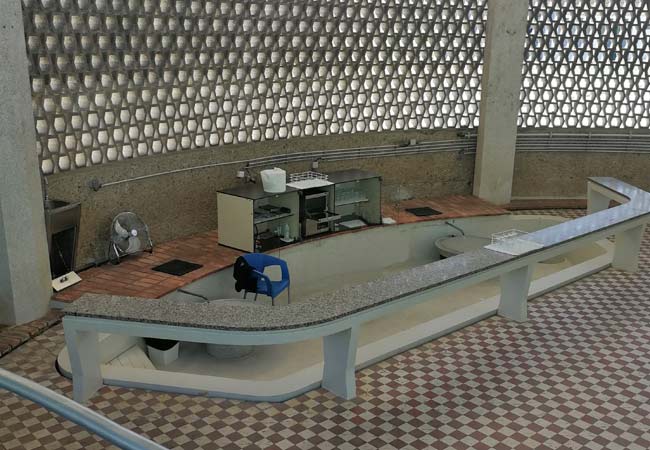
The Fuente de Agua may not be as idyllic as the idea of a natural spring conjures up, but the water is free and healthy
Castelo de Chaves
At the heart of Chaves and occupying the highest point of the city is the Castelo de Chaves.
All that remains is the medieval keep and impenetrable walls, which were strengthened in 1662 during the Restoration Wars with Spain. Within the castle is the delightful Jardim do Castelo that provide wonderful views over the city.
Housed in the keep is a military museum (€1) and at the top of the tower is another great viewpoint.
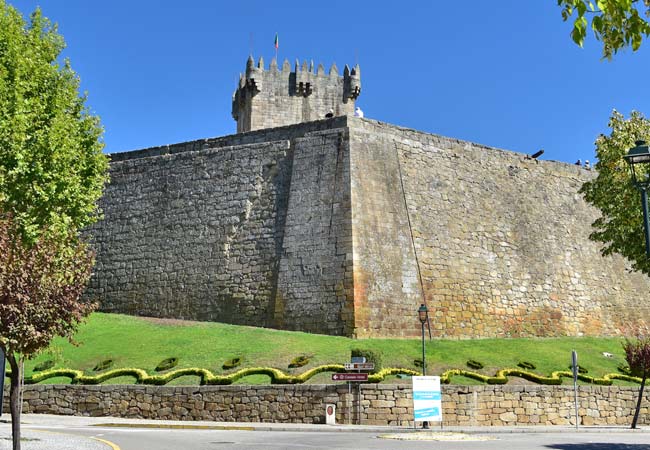
The mighty castle walls
The N2 marker
The Nacional 2 (N2) road is the most famous road in Portugal and extends the whole length of Portugal through the interior of the country. The route travels from Chaves in the north 739km (453mile) to Faro in the south. This is a very scenic route and is popular with bikers, taking two or three days to complete.
There is even a “Passport” booklet where a stamp from each of the 35 tourism offices along the route can be collected.
The actual N2 0km marker is just to the east of Chaves historic centre and is decorated with stickers from groups who have travelled the route.
Related articles: A tourist guide to the Nacional 2
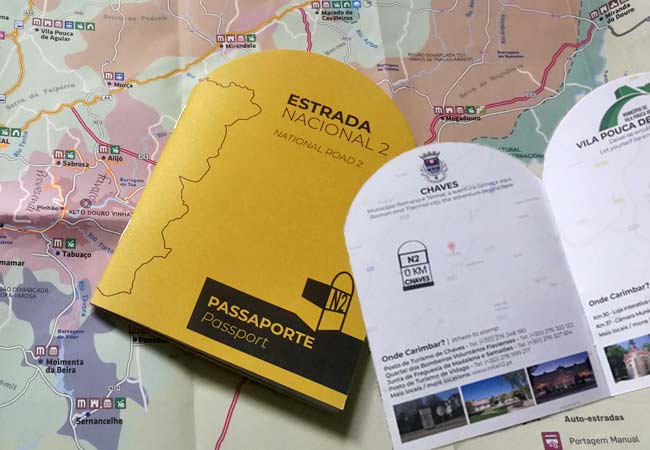
Even the most hardened Portuguese biker wants to get their N2 stamps in their book
Castelo de Monforte
12km east of Chaves, standing at the top of an 820m hill is the Castelo de Monforte. The setting of this 13th century stone castle provides wonderful views over the Chaves Valley.
Note: Due to its remote location and few visitors, it is often closed, with door to the central courtyard locked.
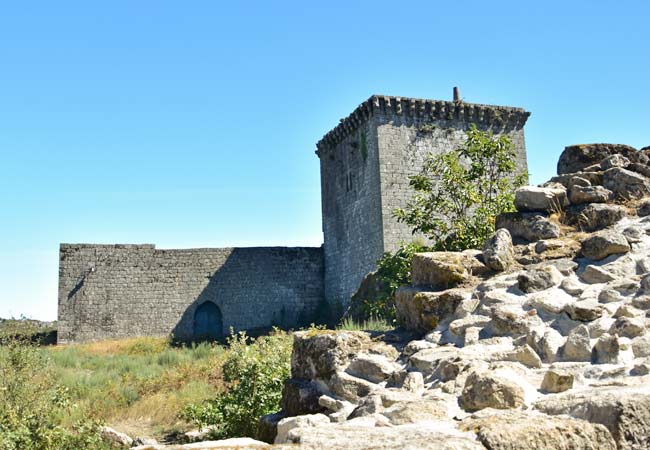
The Castelo de Monforte, once an important fort now barely visited….
If you've found our content valuable, we'd welcome your support.
The digital publishing landscape has evolved significantly. As a small independent publisher, we face growing challenges. Search engines increasingly favour paid content over organic results, while AI-generated content often reproduces original work without attribution.
To support our work, please consider bookmarking this page (press Ctrl + D) for quick access. If you find an article helpful, we'd be grateful if you'd share it with friends on social media.
For specific questions, please see our Reddit community at r/LisbonPortugalTravel.
Should you notice any outdated or incorrect information, please contact us at [email protected]
Thank you for helping us continue to provide valuable content in an increasingly challenging digital environment.























